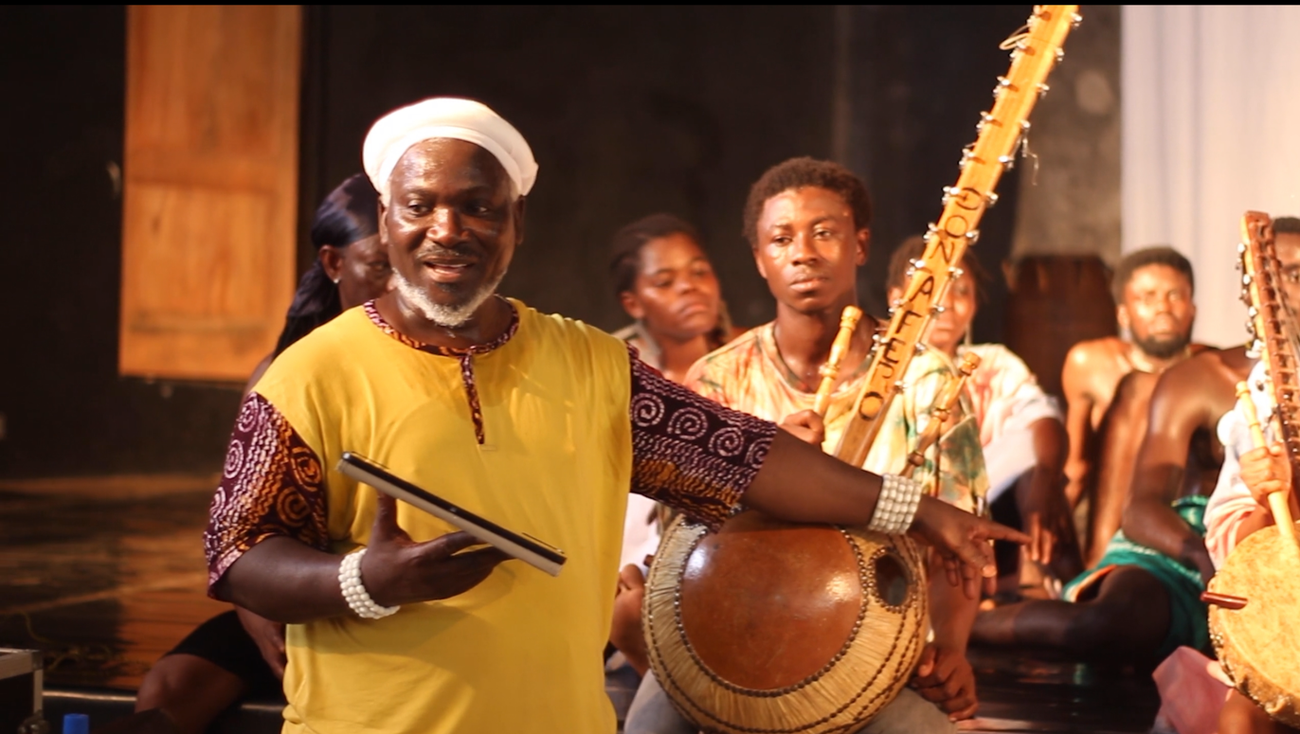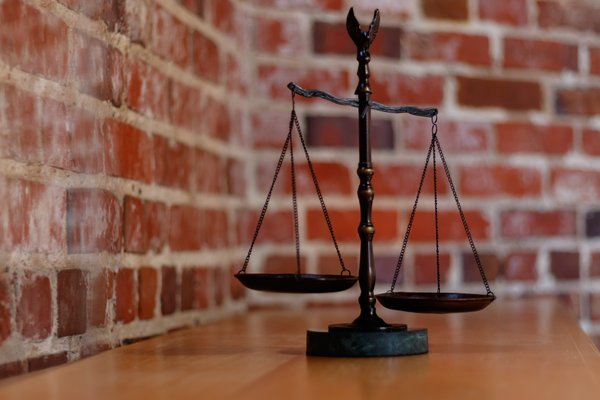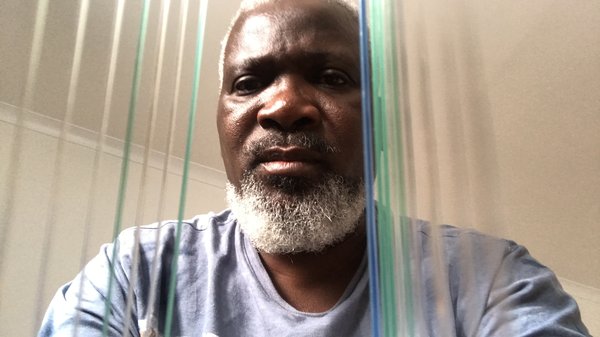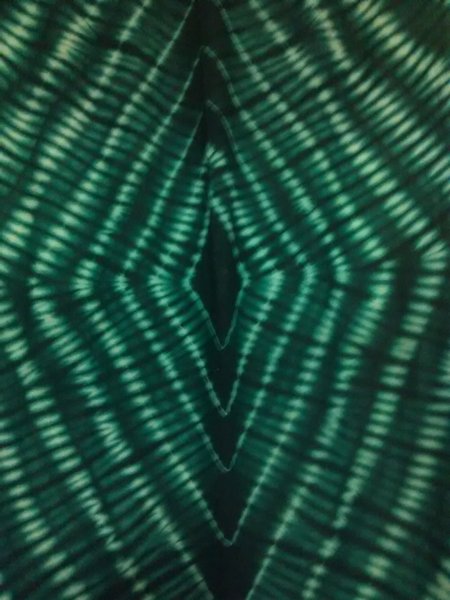
A scene depicting reconciliation in the live streamed R&D sharing on the Noyam Stage. Photo by Gameli Tordzro.
In May 2022, we arrived in Dodowa Ghana, to work on MIDEQ’s Arts, Creative Resistance and Well-being work package (WP11) and the Access to Justice work package (WP8) Impact Initiative under the working title Justice, A Migration Dance. Together with the Noyam African Dance Institute (Noyam), we carried out a week long research and development pilot of the project to test our methods and processes. Artistic methods and processes are, by their very nature, based on layered interactions, reflections and collaborative exploration. This generates new perspectives, insights, understanding with which to create engaging pieces of music, movement and textiles. We co-created the initial music, textiles and dance as a stage performance which was live-streamed to engage both audiences in the Noyam theatre in Dodowa and beyond.
We returned in December 2022 and worked on the main production drawing on the research and development workshops of May 2022. This blog is part of a series of reflections on our process, methods and ways of working
The importance of language
Each element of the performance was viewed as a language to communicate new artistic perspectives on MIDEQ’s research data. The production offered the opportunity to bring in the language of music, movement, and fabric, textiles, colour into one narrative. We used Dangbe, Akan, Ewe, Ga, and other languages of those involved in the theatre piece including English. The performance thus emerged out of immersive exploratory discussion, experimentation and reflection on, and interpretation of, the concepts of ‘justice’, ‘access’ and ‘access to justice’, as well as the inequality and development implications of South-South migration from indigenous knowledge and language perspectives of the participant artists in Dodowa.
We used group discussion to scope the meaning of access and justice in the context of traditional cultures through critical linguistic excavation of meaning and values invested in the terminologies of the two words. For example, in excavation the word for justice in dangbe, ‘dami’, we discovered that the two concepts that form the word ‘da’ - to stand or to be, and ‘mi’ - in, point at ‘standing in’ for another. Thus, leading to the concept of ‘Midalor’ or mediator. We also noticed the common phonological and correspondent meanings of the two words, ‘mida’ and mediate. This is in accordance with multiple excavated modern European terminologies (which we have discovered in another related research) that are etymologically linked and rooted in Ewe, Ga, Akan and Dangbe (including words like knowledge, danger, phenomena, ego and many more).
This process of linguistic excavation of meaning and what it reveals, promotes new understanding for our participation artists and academics around emerging concepts of artistic research in how it treats language, knowledge and understanding. It grants the creative artists who are participating the opportunity to become contributors to the development of new understanding around the issue of access to justice, and the processes of dealing with inequality and development in contexts of South-South migration. It also led to a new title for the piece, Dami, Mini Kuraa Ji Dami? meaning Justice? What in this World is Justice?
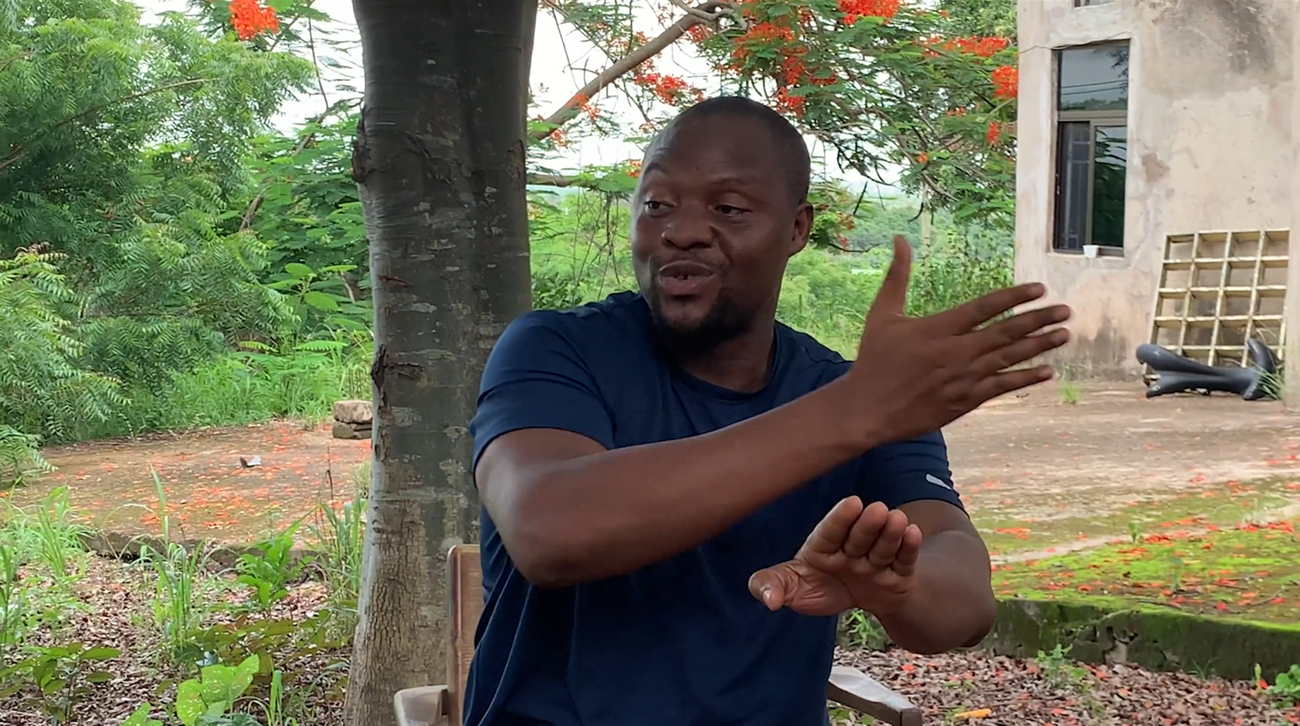
The co-devised piece: the research and development stage
The performance starts with two new songs created during this process, starting with ‘Justice Must Surely Prevail’ and ending with ‘We Need Justice’ in Dangbe and English. In the performance, dancers, representing different cultures travel to a different part of the world. They carry with them many significant items from their backgrounds, experiences, and worldview. The calabash gourd, a central object in the performance, is clad in white cloth. It represents an ‘infinite fountain’ of justice positioned before everyone as they journey on.
With the backdrop of drapes setting the scene somewhere in the world, the dancers build a temporary settlement using objects and items they are migrating with in the form and metaphoric representation of a box. This is in contrast with the spherical calabash gourd, or Ego as it is known in Ewe, which represents our shared world and values of justice. The box becomes “home” (Ahome, in the Anexɔ dialect of Ewe spoken in Togo and Benin) to them, also symbolising the various set ideas, mindsets and societal constructs of justice and the implied limitations to universal access. At this transit point, many scenarios exploring ideas of gender, education, religion, work, economics, culture, abuse of power, suffering, mediation and reconciliatory approaches to justice are performed. They emerge from the movement between, around and within the box and the white clad Ego calabash gourd. Ego symbolises universal uncontested justice and its open access. Each scenario ends at Ego, and a drink from calabash represents the unique point of attaining justice. The dancers walk away from the calabash when justice is not being experienced, attained or seen as being served.
Colour, textile, costume, set design and props play important roles with the movement and music in communicating ideas, the mood in the narrative and story of the piece. The piece climaxes with the community, to deconstruct its metaphoric box, and use it to carry the fallen to a new future led by the world of values contained in the calabash gourd. Significantly, the concept is to constantly re-evaluate our perspectives, knowledge, culture, worldview, and the policies that emerge from them. We must not remain confined in a box or else we find ourselves stuck and unable to develop.
Videography documentation is integral to our artistic method and process. We recorded the process and produced short documentary films of the process - ‘Justice, A Migration Dance’. We also produced a dawn broadcast jingle to advertise the showing of Dami at the Noyam Theatre in Dodowa.
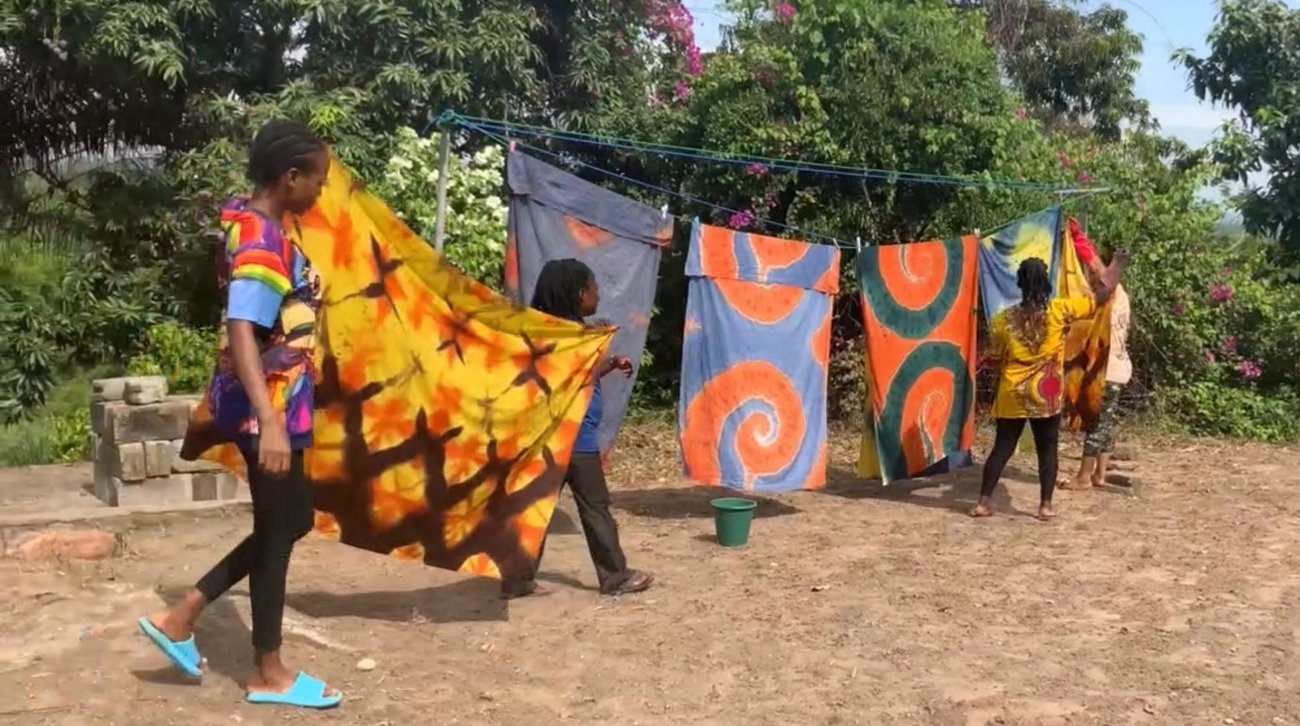
Process is key
As noted above, we discussed with all the participants, the key concepts around justice, and access to justice, inequality and development in the various languages present in the group in developing the piece.
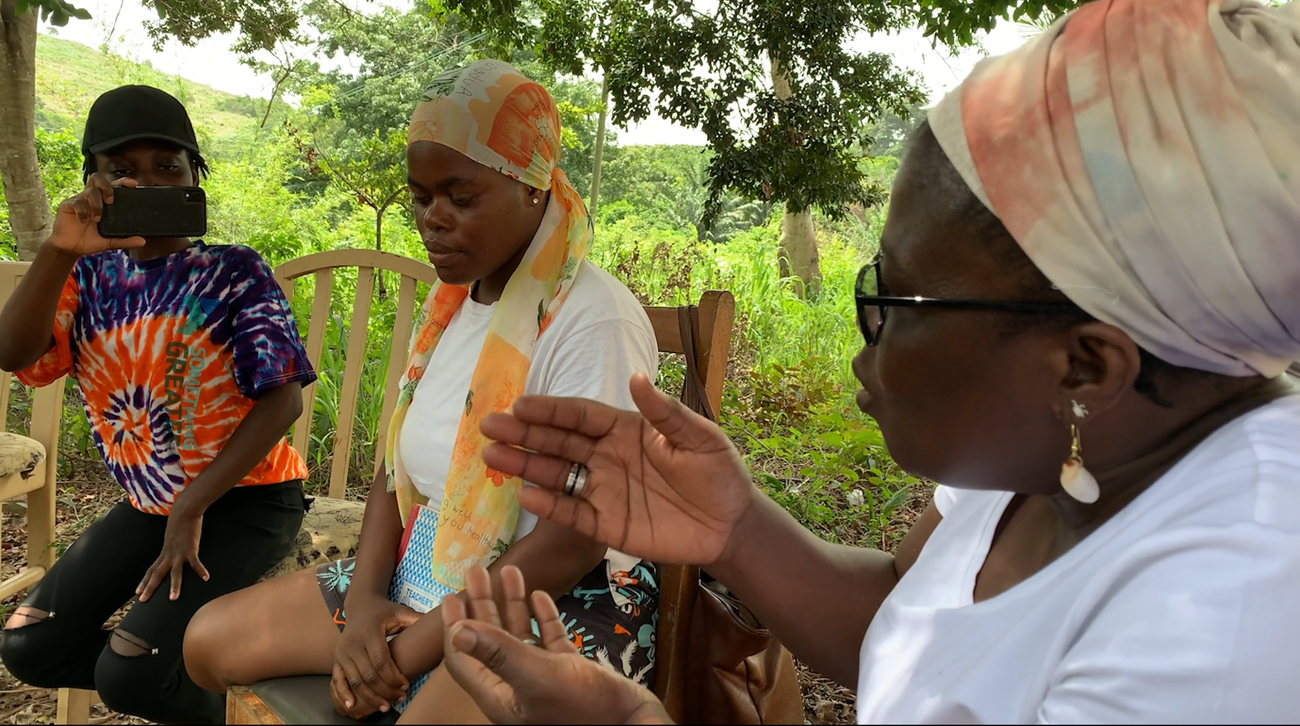
Each discussion session explored the conceptual values invested in the words and idioms in which justice and access are expressed, performed and understood from language to language. Our task was to explore and depict interpretations, understanding, and experience of justice, access, inequality, and development. We carried these out through meticulous processes of creating musical interpretations, through body movement in dance, and in fabric, colours, textiles and design. Finally, we filmed the activities and the performance for screen narratives of the artistic research methods and process.
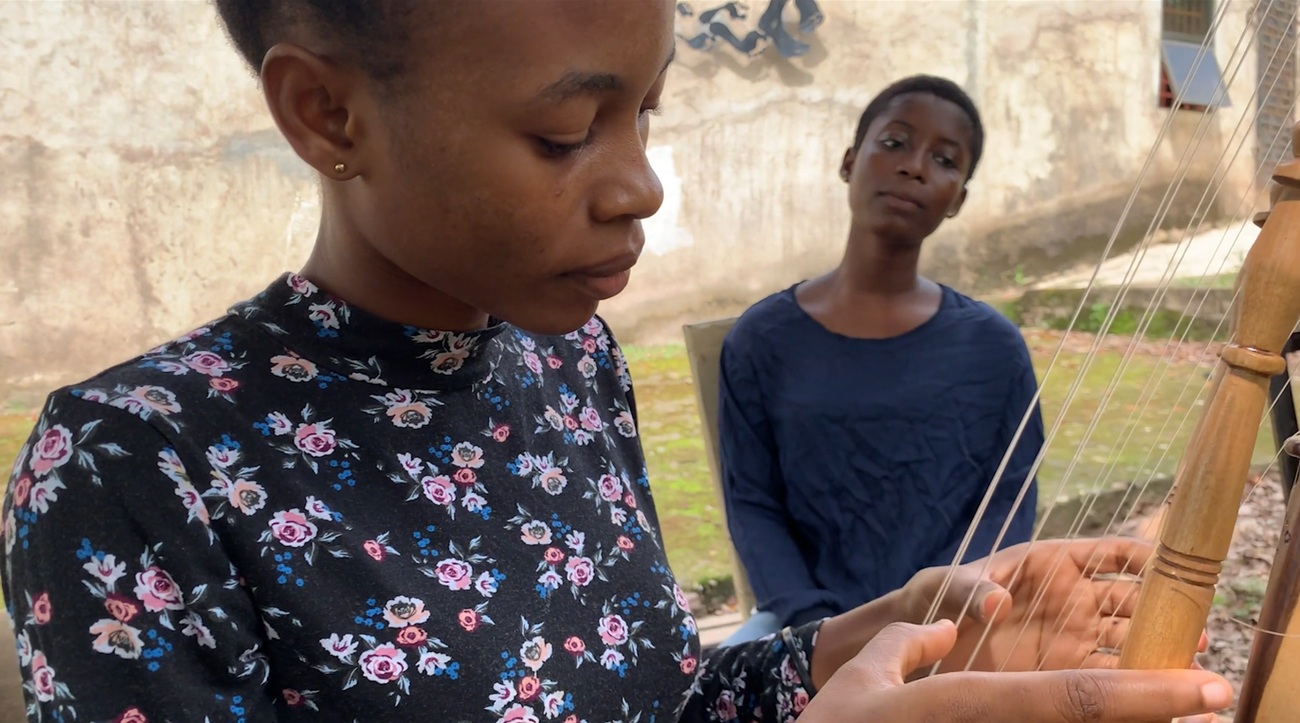
Drawing on various indigenous and cultural values of cloth, colour, sounds, music, objects, the body, movement and memory and voice we operated in small groups and brought the segments together through experimentation, dramaturgical structuring, storytelling devices and rehearsal.
An important element of the process was skills and capacity development of all the participants. Participant were encouraged to explore new activities such as music, tie-dye, movements and dance, sewing and costume making, and set design and construction. We set up a special training for five young women in video recording and production in what was later to become our ‘Bush Studio’. We also encountered and addressed some challenges pertaining to the business and creative industries management, entrepreneurship skills and practices required for the successful sustainability of the valuable legacies such projects leave in communities like Dodowa. Given this, we have initiated an informal theatre administration training and skills transfer to Noyam artistic director in order to ensure that projects such as this continue in the long term.
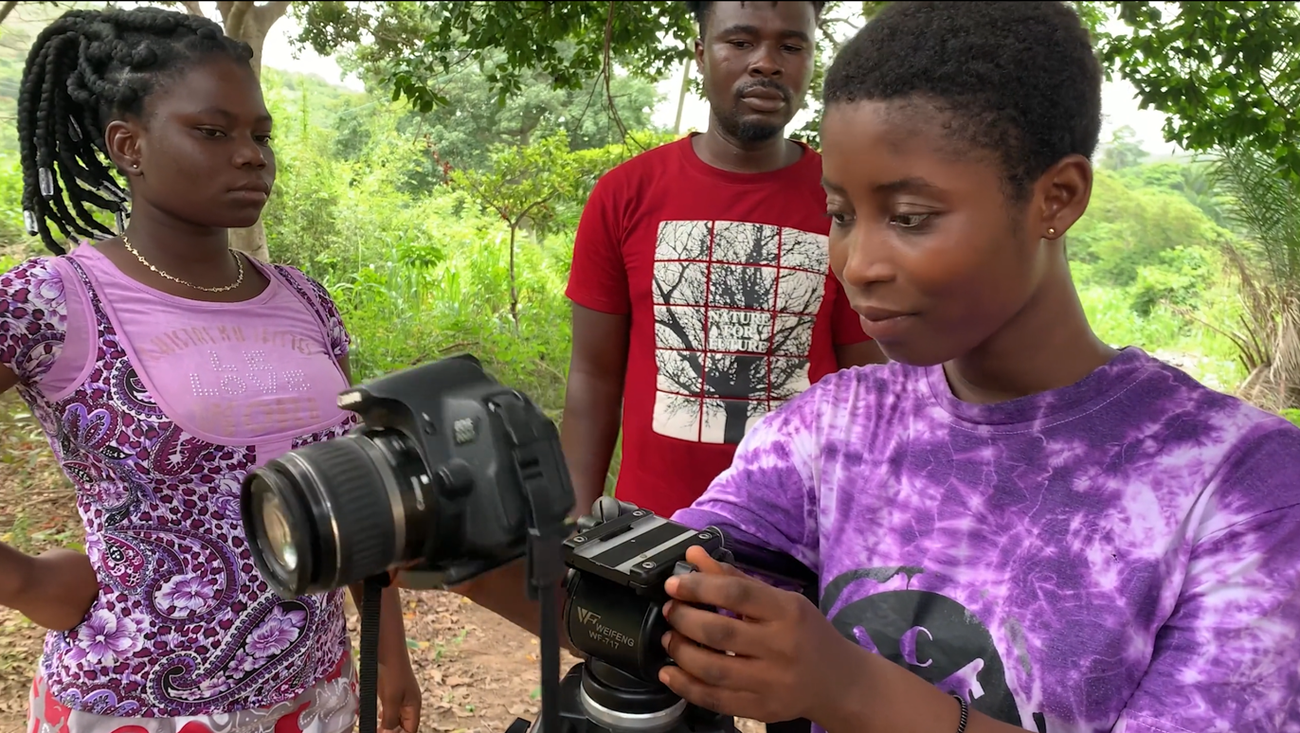
Insights
MIDEQ researchers in various work packages and corridors are able to work with the WP11 researchers in order to ‘translate’ the findings of their research into creative outputs that are accessible to a wider audience than would typically be the case for academic outputs. The aspirations is that academics, community partners in research, as well as policy and community development implementers are able to observe this work as additional/alternative interpretations approaches to academic research and community engagement. Such engagement takes advantage of, and caters for, the opportunity to move our research knowledge exchange beyond the academy into the realm of the community through multiple languages.
Ordinarily, such research would be expected to be carried out in English and published in English text and perhaps, translated into other dominant languages. By foregrounding creative arts as language within which multiple languages interact and expand the scope of conceptualisation, and through the exploration of multiple cultural conceptualisations in the context of the Global South and South-South migration, we hope to extend the understanding and reach of our research.
